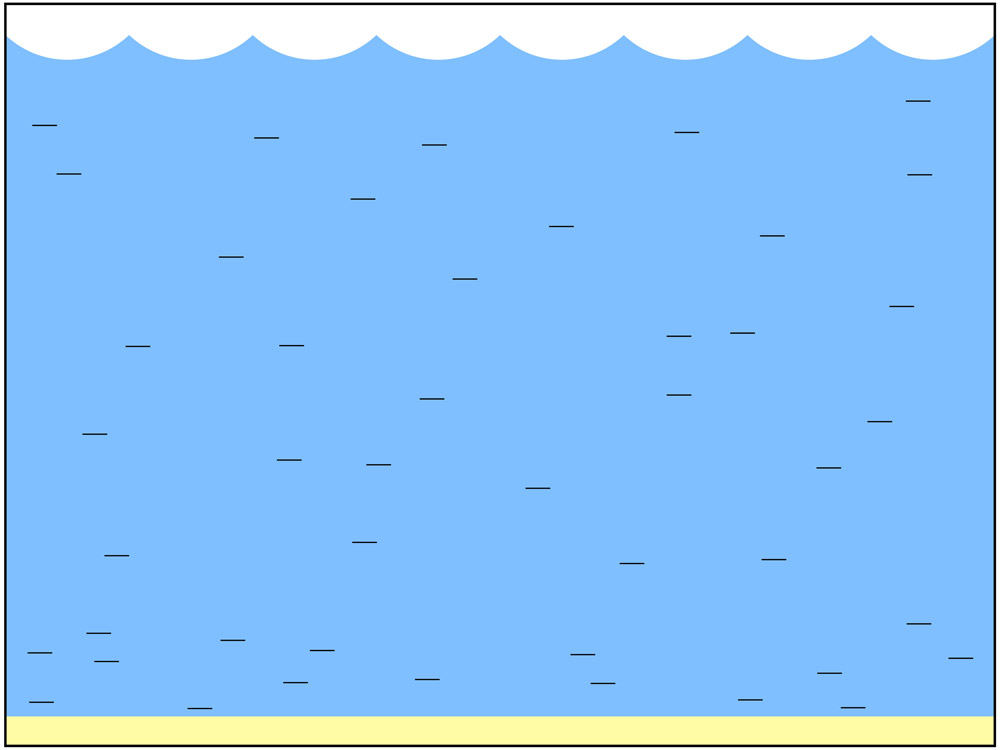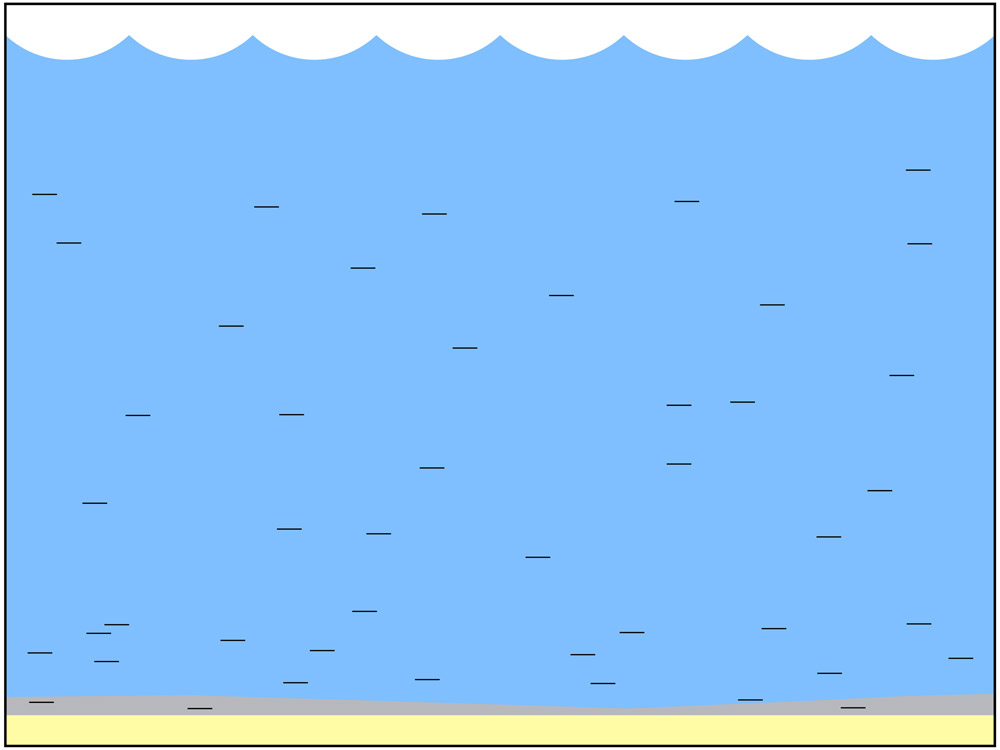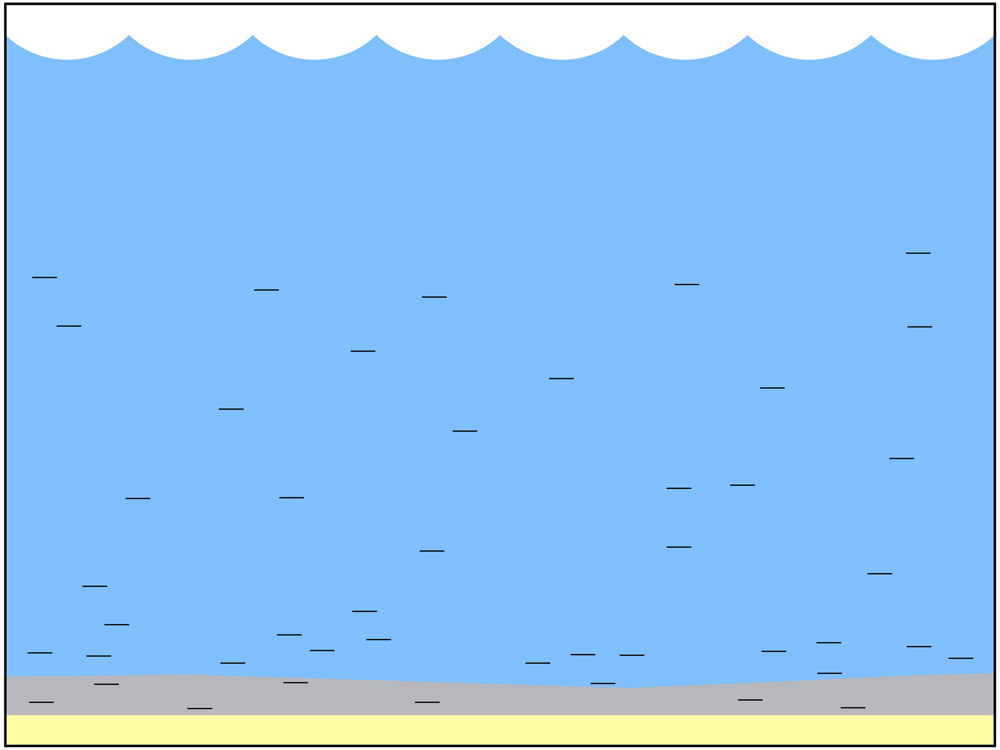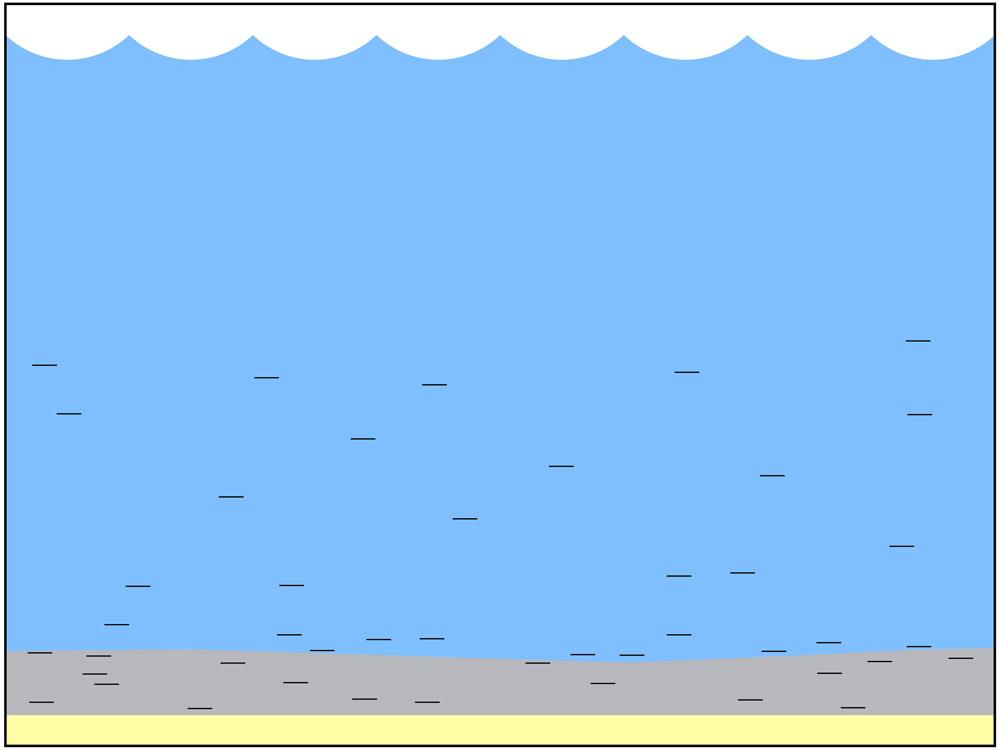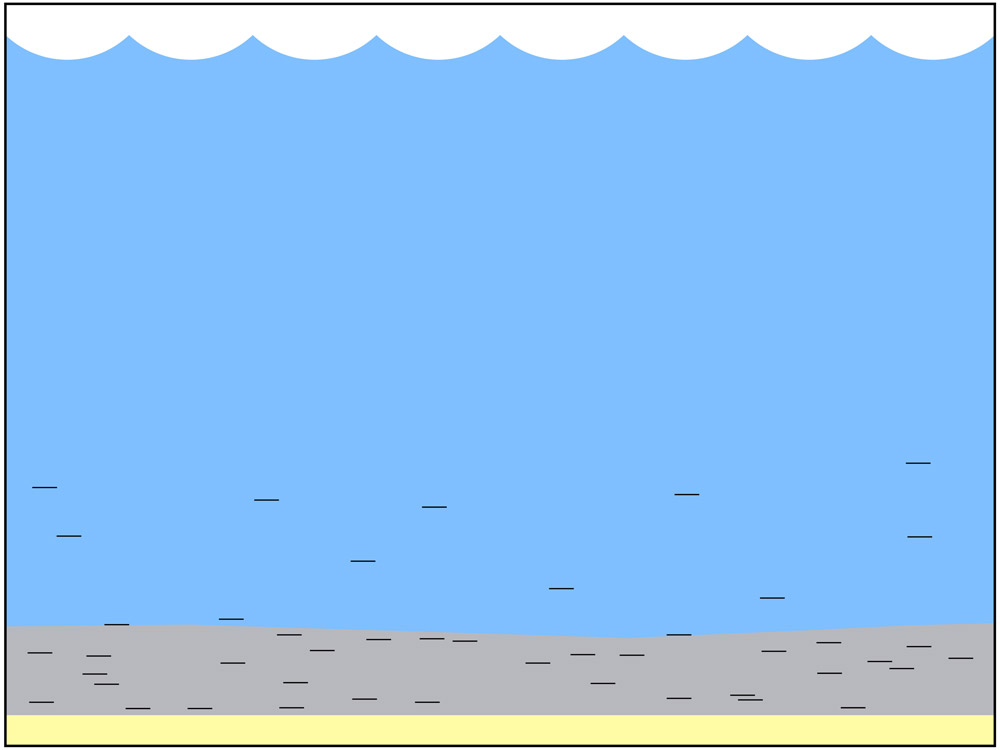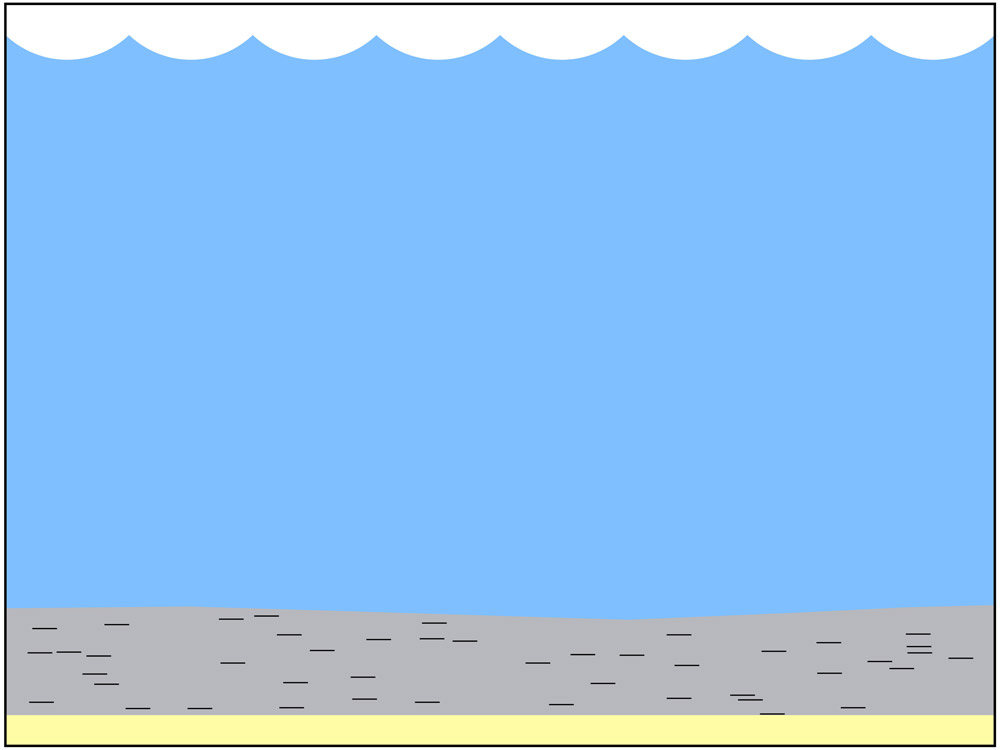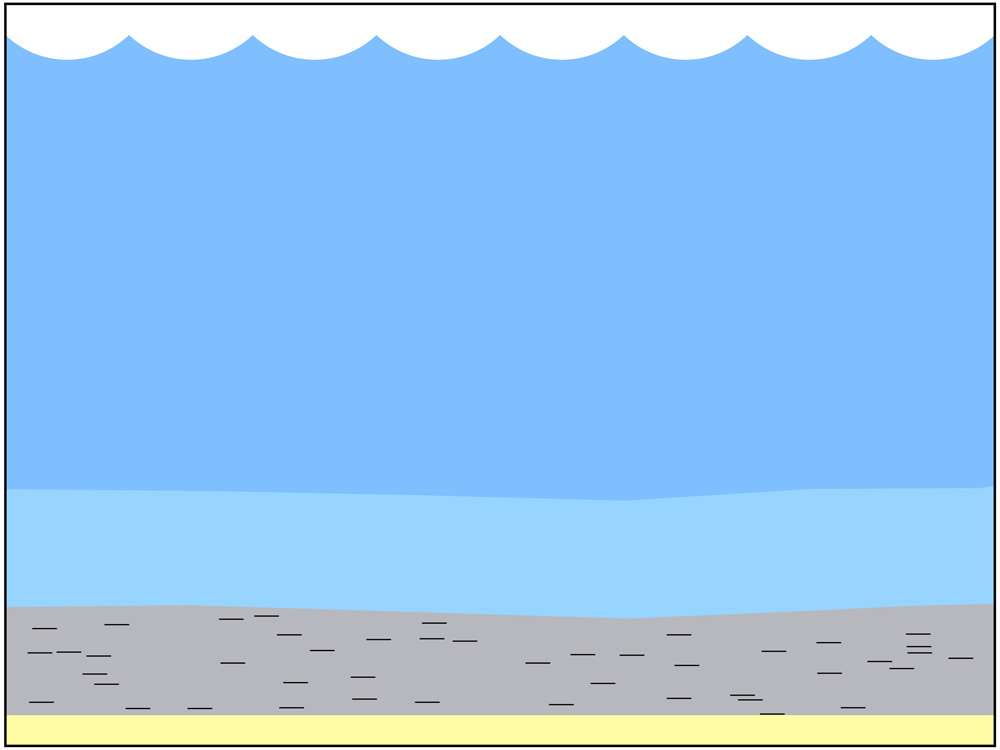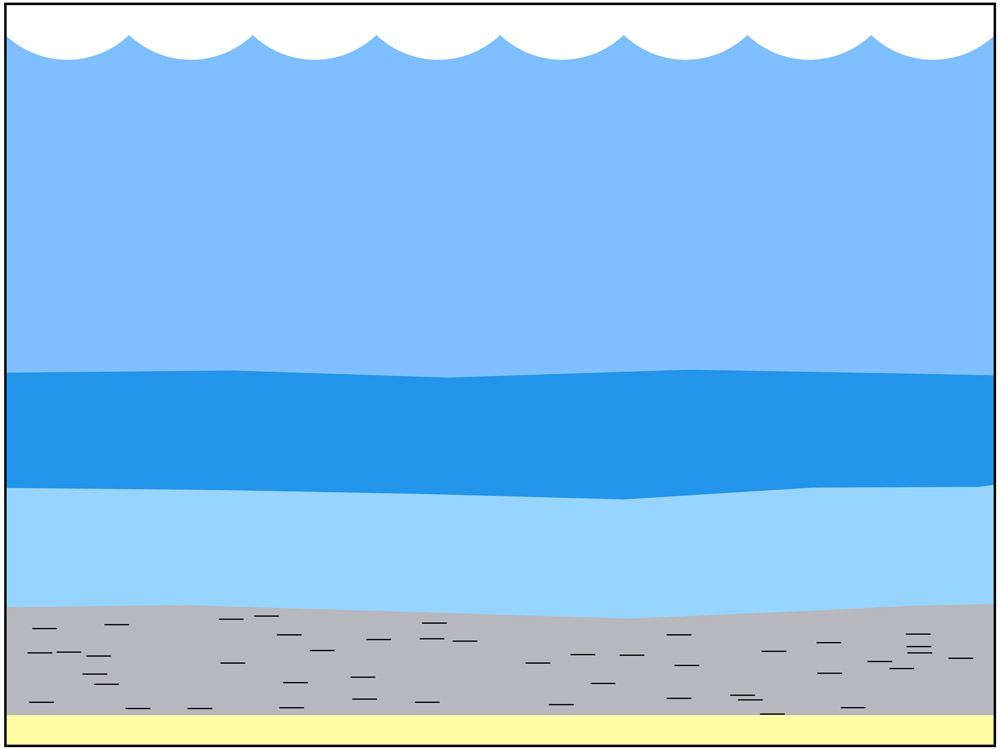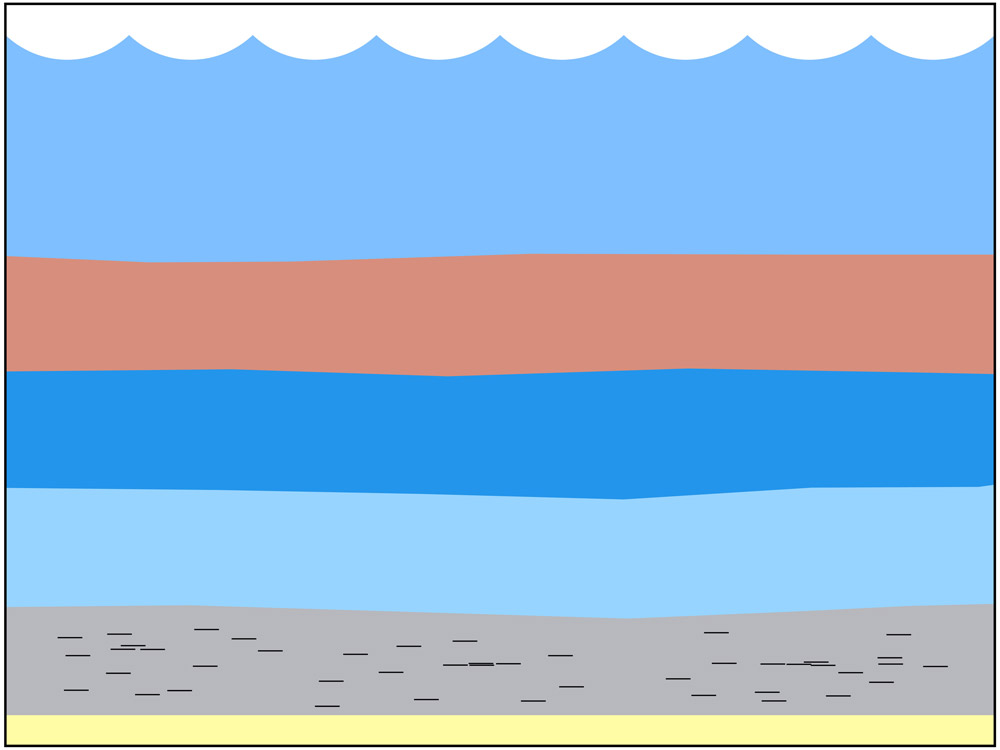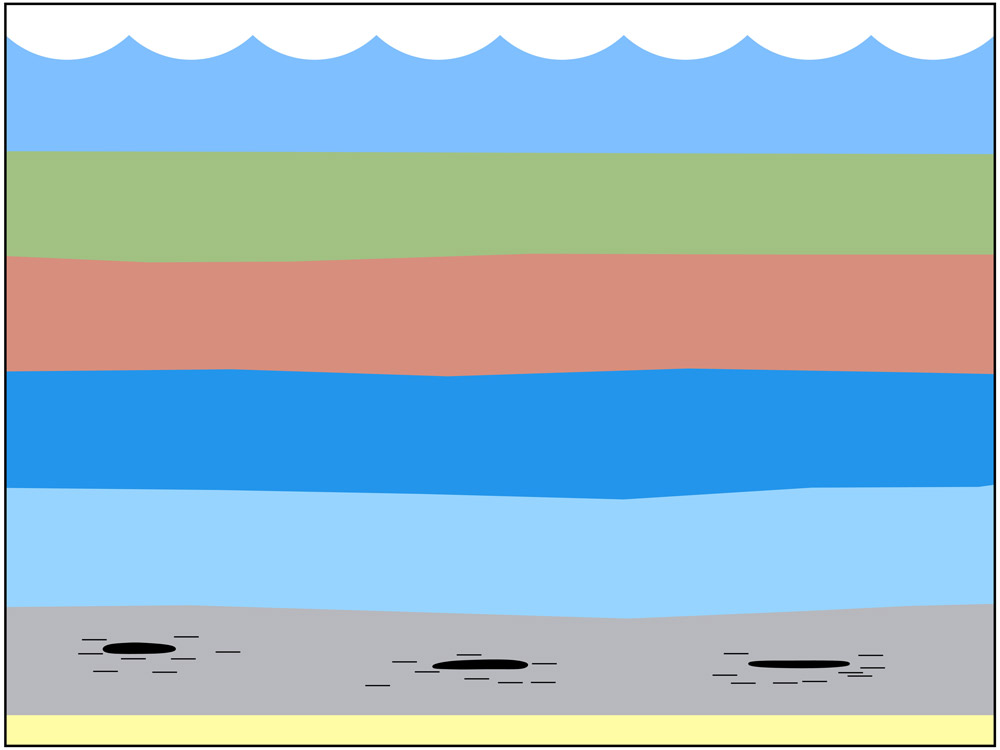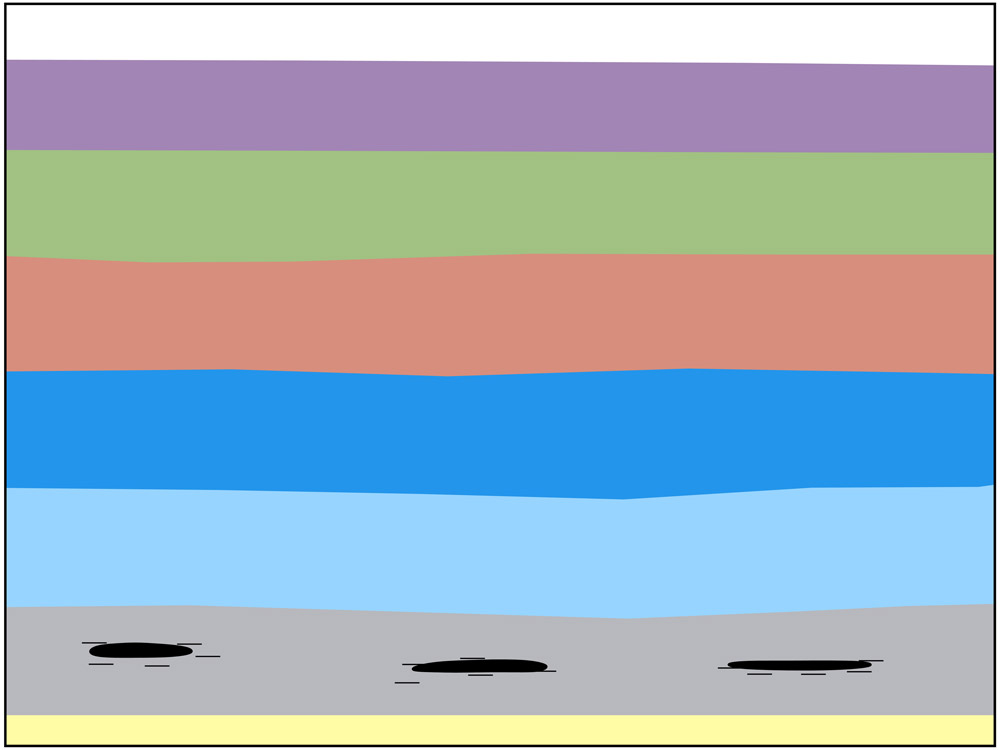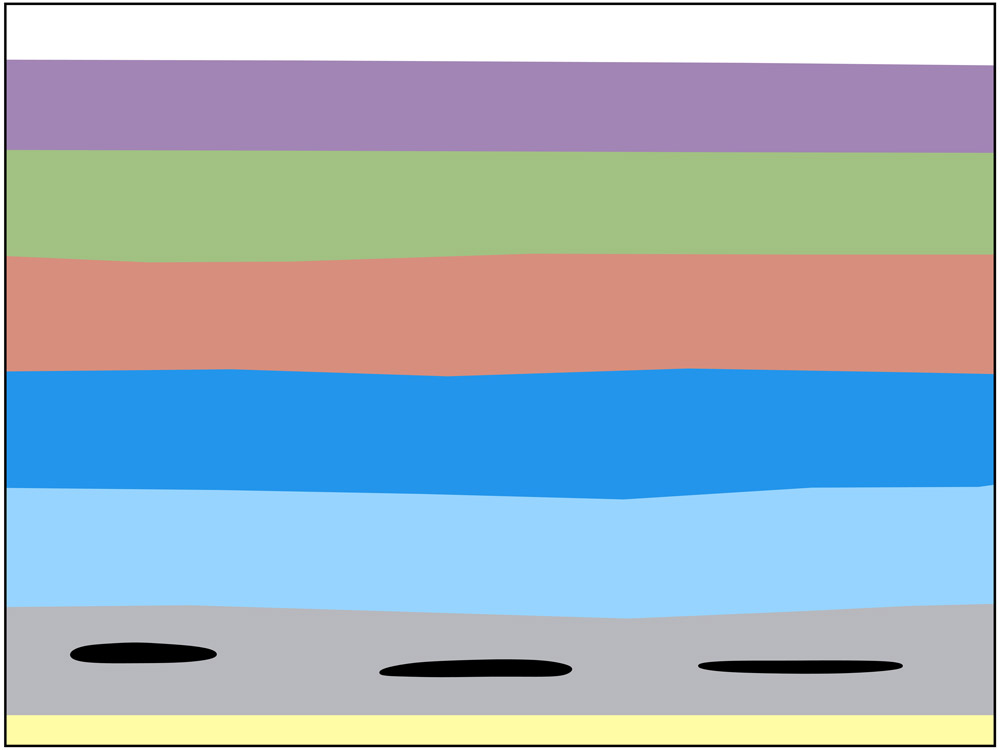How fossil fuels were formed:
- Petroleum and natural gas were created from very tiny plants and animals that had lived in oceans, or seas. Coal formed from plants that grew on land.
- Hundreds to thousands of feet of earth continued to cover the dead plants and animals over the millions of years when the seas kept advancing and receding.
- Even after the seas were gone, weight from the layers above continued to press down.
- Heat and pressure "cooked" the organic materials into the liquid called petroleum.
- The enormous weight and pressure together with very high heat created natural gas.
- The rocks that contain coal in our area were formed millions of years later than the rocks that contain petroleum and natural gas.



